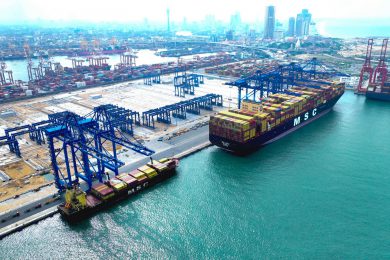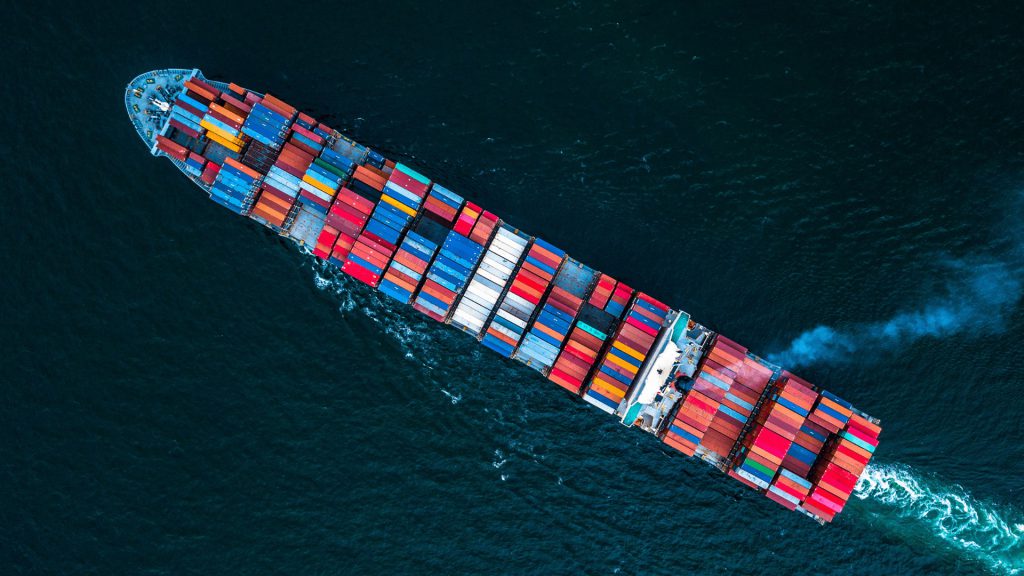by Fotini Tseroni
Containerships can reduce fuel consumption and resulting carbon dioxide emissions by 14 per cent on a per voyage, a new study has found.
The study, commissioned by the IMO-Norway GreenVoyage2050’s Global Industry Alliance to Support Low Carbon Shipping (Low Carbon GIA), is centered on Just In Time (JIT) arrivals.
(JIT) arrivals allows ships to optimise speed during their voyage to arrive in port when berth, fairway and nautical services are available.
The study shows that containerships can reduce fuel consumption and resulting carbon dioxide emissions by 14 per cent on a per voyage basis using JIT arrival.
JIT is an important tool that can contribute to a ship attaining its required carbon intensity indicator (CII) and associated CII rating in accordance with IMO’s short-term GHG reduction measure, which will enter into force later this year.
JIT can be taken up, together with other operational measures, in the enhanced Ship Energy Efficiency Management Plan (SEEMP) which will play a central role in the implementation of IMO’s recent energy efficiency measures.
This latest study, undertaken by MarineTraffic and Energy and Environmental Research Associates (EERA), explores the global implementation of JIT in the container sector. Using AIS data from the calendar year 2019 (pre-pandemic), the impact of JIT on fuel consumption and emissions was assessed by optimising all voyages in three scenarios:
1. Over the entire voyage,
2. Over the last 24 hrs, and
3. Over the last 12 hrs.
The results show that while optimising speed over the entire duration of a voyage offers the greatest saving opportunity (displaying a mean fuel saving per voyage of 14.16 per cent), there were benefits in all scenarios with savings of 5.90 per cent (24 hrs scenario) and 4.23 per cent (12 hrs scenario), respectively. This indicates that implementing JIT over the last 12 hours of a voyage can already greatly contribute to fuels and emissions savings.
“In fighting climate change, global shipping has a steep mountain to climb, and we need to pull all levers to deliver in line with the Paris Agreement. The study underlines that while we work to accelerate and scale the availability of the future green fuels, in the short-term significant emissions reductions can be achieved by bringing vessels, terminals and ports together to exchange standardised data and facilitate Just In Time arrivals,” said Capt. Andreas M. van der Wurff, Port Optimisation Manager at A.P. Moller-Maersk and Chair of the Low Carbon GIA Ship-Port Interface workstream.
“We’re excited to deliver this study to the IMO! Just In Time sailing can contribute significantly towards emissions reduction. We have demonstrated that half of the benefits can be achieved by optimising less than 10 per cent of voyages. These are low hanging fruits for our industry. I am proud by the analysis conducted by the MarineTraffic data team in collaboration with EERA,” added Argyris Stasinakis, Executive Partner at MarineTraffic.
The Low Carbon GIA is a public-private partnership with the aim to develop innovative solutions to address common barriers to decarbonising the shipping sector. It has been actively exploring the concept of JIT through various research projects and several industry stakeholder roundtables. In 2020, it published the Just In Time Arrival Guide – Potential Barriers and Solutions, providing guidance to stakeholders towards the implementation of JIT Arrivals.
The Low Carbon GIA was established in 2017 under the framework of the GEF-UNDP-IMO GloMEEP Project and now continues to operate under the framework of IMO-Norway GreenVoyage2050 Project.
You can access the study here
Fotini Tseroni Content Writer at MarineTraffic where this piece first appeared























